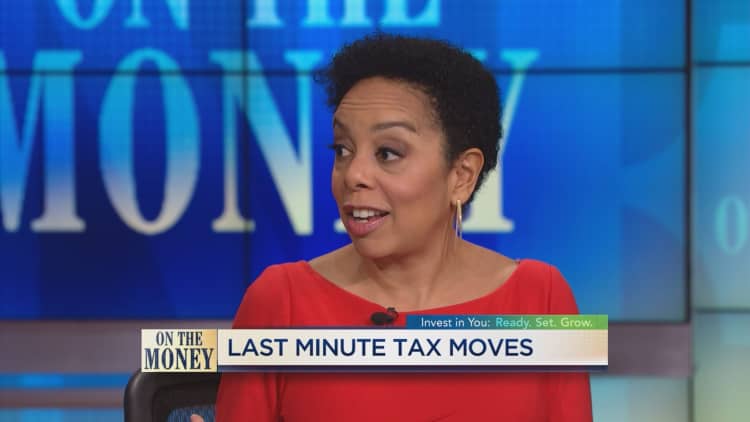As if this tax season weren't hectic enough, some accountants said they've run into software problems as they guide entrepreneurs through a new and complex 20 percent tax break.
This year marks the first season in which households will be filing under the Tax Cuts and Jobs Act. This overhaul, which went into effect in 2018, doubled the standard deduction, eliminated personal exemptions and curbed itemized deductions.
Some software programs have had issues with aggregation, and others have trouble with making sure the software understands which businesses are 'specified service trades or businesses.'Jeffrey LevineCPA and CEO of BluePrint Wealth Alliance
The new law also introduced a break for small business owners called the qualified business income deduction.
This tax break allows owners of "pass-through" entities, including sole proprietorships, S-corporations and partnerships, to deduct up to 20 percent of their qualified business income.
As tempting as it sounds, business owners and their accountants have been trying to figure out just who qualifies.
That's because the IRS also issued numerous clarifications through last year and up through January 2019, fine-tuning the break and naming which industries could claim it.

The sudden flurry of updates to the deduction even threw tax software providers for a loop, requiring them to tweak their programs just before tax season kicked off.
"There were changes that weren't in the preliminary rules, so the software programs had to be updated to reflect those changes," said Andy Phillips, director of the Tax Institute at H&R Block.
Here's what you should know about the qualified business income deduction.
Do I qualify?
The IRS has drawn some boundaries on who can claim the deduction.
First, entrepreneurs in any industry may take the 20 percent deduction if they have taxable income that's under $157,500, if single, or $315,000 if married in 2018.
Limitations kick in above those taxable income thresholds.
For instance, "specified service trades or businesses," including doctors, lawyers and accountants, can't take the deduction at all if their taxable income exceeds $207,500, if single, or $415,000, if married.

If you're an entrepreneur who isn't considered a "specified service trade or business," the rules are a little different.
In that case, you get a reduced deduction if your taxable income exceeds the $157,500/$315,000 threshold but is still under the $207,500/$415,000 threshold.
If your company isn't a "specified service trade or business" and your taxable income is over the $207,500/$415,000 threshold, your deduction is generally capped as a percentage of W-2 wages paid to your employees.
January changes
Additional changes to the law rolled out in January, 2019, when the IRS proposed guidance for rental real estate owners — a safe harbor that they can follow in order to be sure they qualify for the 20 percent deduction.
Other new regulations proposed this year also spelled out the conditions under which a business owner can aggregate multiple trades and businesses in order to get the tax break.
It was these last-minute updates that caught software providers and accountants by surprise — leading to some confusion just before tax season began.
"Some software programs have had issues with aggregation, and others have trouble with making sure the software understands which businesses are 'specified service trades or businesses,'" said Jeffrey Levine, CPA and CEO of BluePrint Wealth Alliance in Garden City, New York.

In some cases, accountants have had to override the programs, he said.
Indeed, H&R Block was among the providers that had to update their programs to reflect those recent rule changes.
One update required the software company to add a statement that must be filed for rental property owners who are using the new safe harbor to qualify for the 20 percent deduction, said Phillips of H&R Block.
The other software adjustment relates to a calculation to determine an entrepreneur's qualified business income, accounting for self-employment taxes, health insurance and retirement plan contributions, he said.
"These are very complex calculations, and the guidance was very general," said Phillips. "The guidance came out before IRS filing season opened, so we held the returns."
Weighing extensions
Since the 20 percent deduction has been a moving target for tax professionals and their clients, it might be worth considering whether it makes sense to file for an extension to Oct. 15.
That would depend on the complexity of your return and any remaining uncertainty with the deduction.
A fair warning: Even if you wait until October to file, any taxes owed are still due on April 15.
"With how late everything was in terms of regulations and guidance, we anticipate either spending more time on returns or having to go on extension," said Portia Rose, CPA and senior tax manager at Mazars USA.
"We have to have those conversations as we get closer to April 15 — extend is your friend," she said.
More from Personal Finance:
Your cash in this tax-advantaged account is vanishing
How to decipher that college financial aid letter
Lawmakers want to bring back these 3 tax breaks


